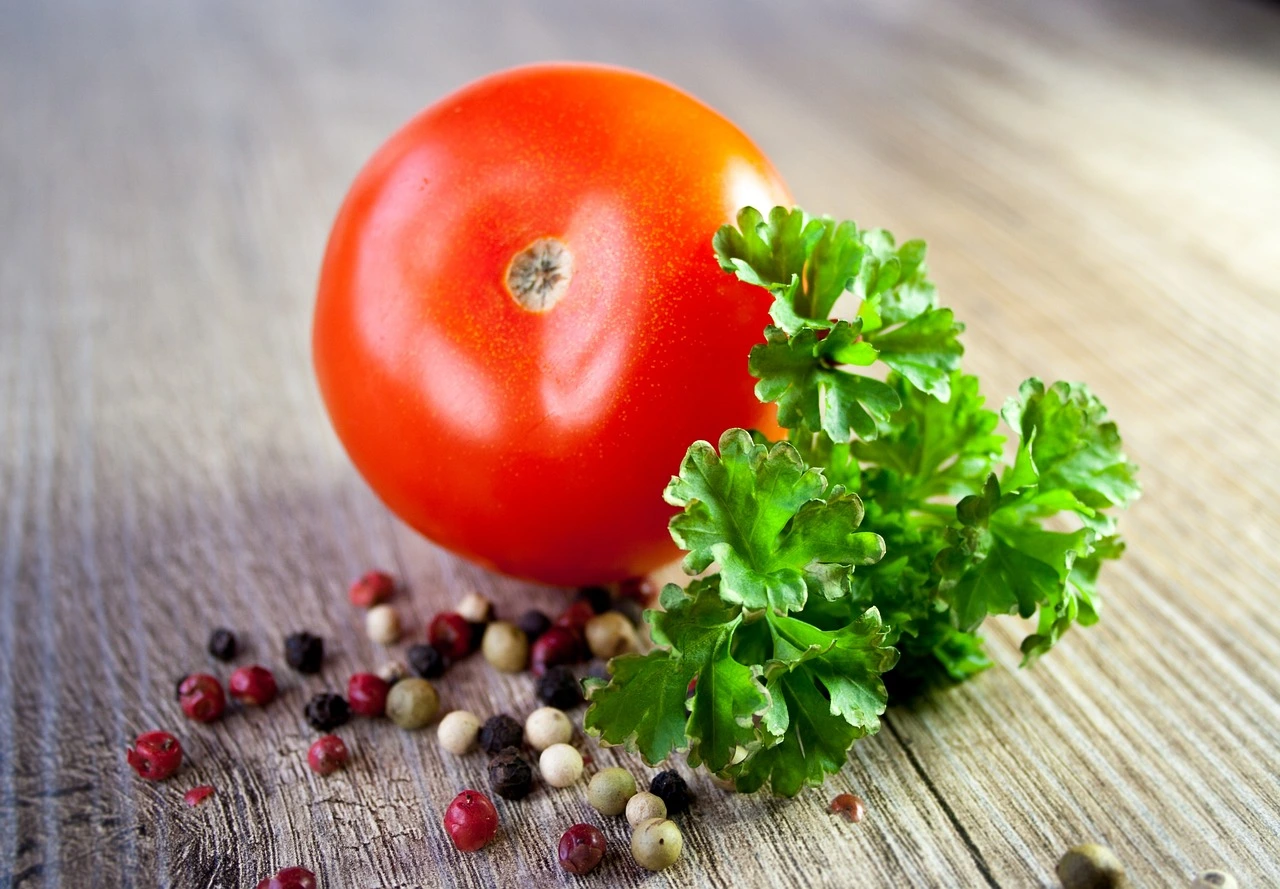How to Make Tomato Juice in a Blender?

The usual kind of tomato is round, red, and a bit sweet and tangy. Tomatoes taste good and have lots of good stuff like vitamins, especially vitamin C, and lycopene, which help keep us healthy.
In cooking, tomatoes are versatile and used in various dishes, including salads, sauces, soups, and stews. They can be consumed raw or cooked, and their vibrant flavor adds depth to many recipes.
Beyond their culinary uses, tomatoes have gained attention for their potential health benefits, including their role in supporting heart health, promoting skin health, and providing essential nutrients.
Table of Contents
Ingredients and Equipment
You need the following ingredients and equipment to make tomato juice.
Ingredients
- 6-8 ripe tomatoes
- 1-2 stalks of celery
- 1 small onion
- 1-2 cloves of garlic
- 1 tablespoon olive oil
- Salt and pepper to taste
- Fresh herbs like basil or parsley (optional, for added flavor)
Equipment
- Blender
- Fine mesh strainer or cheesecloth
- Large bowl
- Pitcher or glass bottles for storage
How to Make Tomato Juice in a Blender?
Tomato juice is not only a refreshing beverage but also a versatile ingredient in various culinary creations. Making your tomato juice at home allows you to savor the pure, natural flavors without the additives found in store-bought versions.
In this guide, we’ll explore a simple and efficient way to make delicious tomato juice using a blender.
1. Prepare the Ingredients
Start by washing the tomatoes, celery, and herbs thoroughly. Roughly chop the tomatoes, celery, onion, and garlic to ensure they blend easily.
2. Saute the Aromatics
In a pan, heat the olive oil over medium heat. Add the chopped onion and garlic, and sauté until they become soft and translucent. This step enhances the depth of flavor in your tomato juice.
3. Blend the Ingredients
Place the chopped tomatoes, celery, and sautéed aromatics into the blender. If you’re using fresh herbs, add them as well. Blend the mixture at high speed until you achieve a smooth consistency.
4. Strain the Mixture
To remove the pulp and seeds, pour the blended mixture through a fine mesh strainer or cheesecloth into a large bowl. Use a spoon to press the mixture against the strainer, extracting as much juice as possible.
5. Season to Taste
Transfer the strained juice back into the blender and season it with salt and pepper according to your taste preferences. Blend briefly to ensure the seasoning is well incorporated.
6. Garnish and Enjoy
Before serving, garnish the tomato juice with a celery stick or a sprig of fresh herbs for an added touch. Serve it over ice for a crisp and revitalizing experience.
7. Chill and Serve
Pour the tomato juice into a pitcher or glass bottle and refrigerate for at least 1-2 hours before serving. Chilling the juice allows the flavors to meld and enhances the refreshing quality.
Is Tomato Juice Good for You?
Tomato juice is rich in vitamins, particularly vitamin C and potassium, and can be a good source of hydration. Some people also enjoy tomato juice as a nutritious addition to their diet.
Tomato juice is a nutritious beverage that offers several health benefits. Here are some of the potential advantages:
1. Rich in Nutrients
Tomato juice is a good source of essential nutrients, including vitamins C, A, and K. It also contains folate, potassium, and various antioxidants such as lycopene.
2. Cancer Prevention
Lycopene is a powerful antioxidant found in tomatoes, and it has been associated with various health benefits. It may help protect against certain types of cancers, particularly prostate cancer, and it has antioxidant properties that can help neutralize free radicals in the body.
Read More: Does Tomato Juice Go Bad?
3. Heart Health
The potassium content in tomato juice can contribute to heart health by helping to regulate blood pressure. Additionally, the antioxidants in tomatoes may have a positive impact on cardiovascular health.
4. Weight Management
Tomato juice is relatively low in calories and can be a satisfying and nutritious beverage, potentially supporting weight management efforts.
5. Digestive Health
The fiber content in tomatoes, including tomato juice, can promote digestive health by promoting regular bowel movements.
It’s important to note that while tomato juice can be a healthy addition to your diet, it’s also crucial to consider individual dietary needs and any potential sensitivities or allergies.
Conclusion
Blending tomatoes for juice is a quick and accessible method, offering the convenience of a blender and the retention of valuable fiber. While it may not yield the same smoothness as juicers, it allows for customization with the optional ingredients.
Whether you strain for a smoother consistency or embrace the natural pulp, homemade tomato juice from a blender is a versatile and flavorful option, perfect for enjoying the goodness of fresh tomatoes in a refreshing beverage.